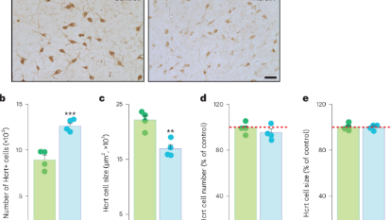“Long COVID: A Persistent Health Challenge with Far-Reaching Consequences”

Since 2020, the phenomenon of long COVID-19 has emerged as a widespread disability impacting millions globally, significantly affecting both health and quality of life while exerting substantial economic costs due to reduced workforce productivity. This condition, characterized by prolonged health issues following SARS-CoV-2 infection, has prompted an unprecedented surge in scientific research, resulting in over 24,000 publications within a span of just four years — making it the most extensively studied health condition in recent history.
READ: Navigating Amsterdam’s Waterways: A Canal Cruise Experience
COVID
As a physician scientist deeply immersed in long COVID research since the early stages of the pandemic, I have contributed extensively to understanding its complexities. I have testified before the U.S. Senate, published numerous studies, and was recognized in Time’s 100 most influential people in health in 2024 for my contributions to this field.
Recent advancements in 2024 have shed light on how COVID-19 can continue to impact various organs years after initial infection, alongside emerging evidence of persistent viral presence and immune dysfunction lasting months or even years. Initially perceived as predominantly affecting the lungs, researchers quickly learned that SARS-CoV-2 impacts multiple organ systems, leading to diverse and enduring health consequences.
Our recent study, published in the New England Journal of Medicine on July 17, 2024, highlights a decline in the risk of long COVID over the course of the pandemic. In 2020, when the original strain of SARS-CoV-2 prevailed and vaccines were unavailable, approximately 10.4% of adults who contracted COVID-19 developed long COVID. By early 2022, with the dominance of the omicron variants, this risk dropped to 7.7% among the unvaccinated and 3.5% among the vaccinated. This decline underscores the impact of vaccination and changes in virus characteristics, which reduced severe acute infections and potentially mitigated chronic disease development.
Despite this decline, even a 3.5% risk translates into millions of new long COVID cases worldwide, exacerbating an already substantial burden of disease. Ongoing data collection indicates that new cases presenting at long COVID clinics remain comparable to 2022 levels.
Long COVID manifests as a complex chronic condition, encompassing over 200 health effects across multiple bodily systems, as outlined in a comprehensive report by the National Academies of Sciences Engineering and Medicine. This report, commissioned by the Social Security Administration to assess disability implications, underscores that long COVID can impair physical and cognitive function for extended periods post-infection, impacting individuals’ ability to work or engage in daily activities.
Moreover, the report emphasizes that many symptoms of long COVID, such as post-exertional malaise, cognitive impairment, and autonomic dysfunction, are not currently accounted for in disability assessments. This gap highlights the need for updated frameworks to comprehensively address the diverse and enduring impacts of this condition on individuals’ lives.
As researchers continue to refine our understanding of long COVID and its broader implications, addressing its multifaceted challenges remains imperative to mitigate its long-term impact on public health and global economies.
No related posts.



